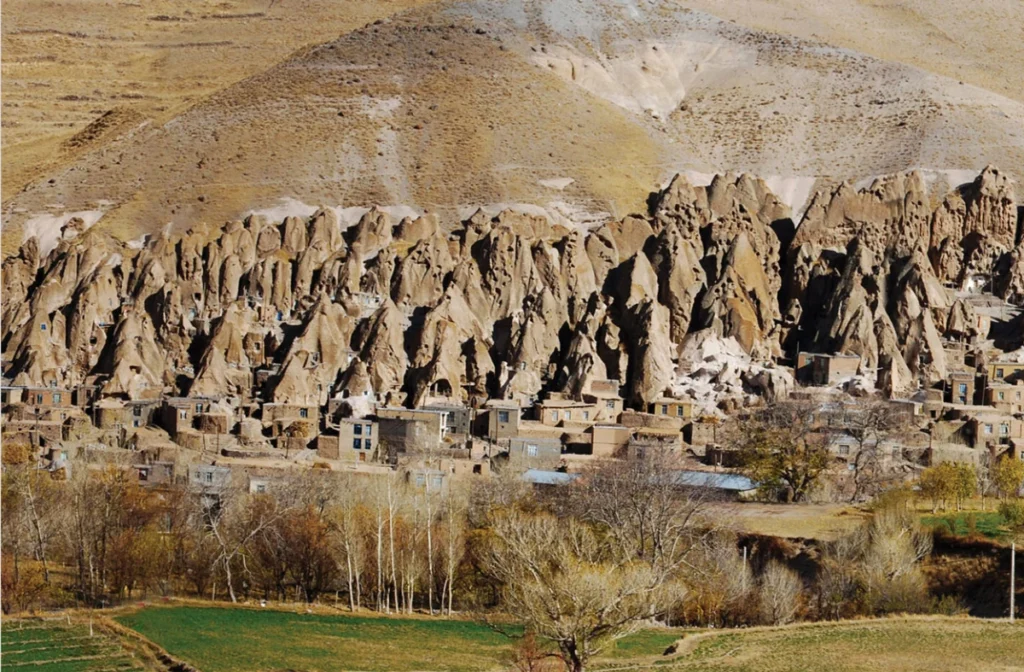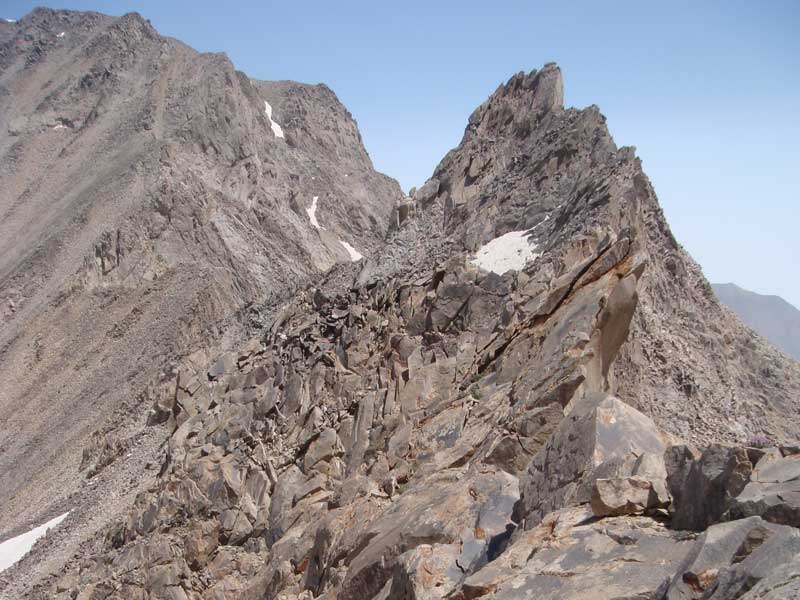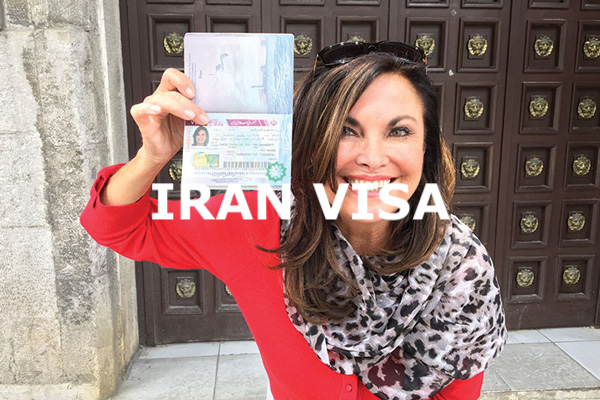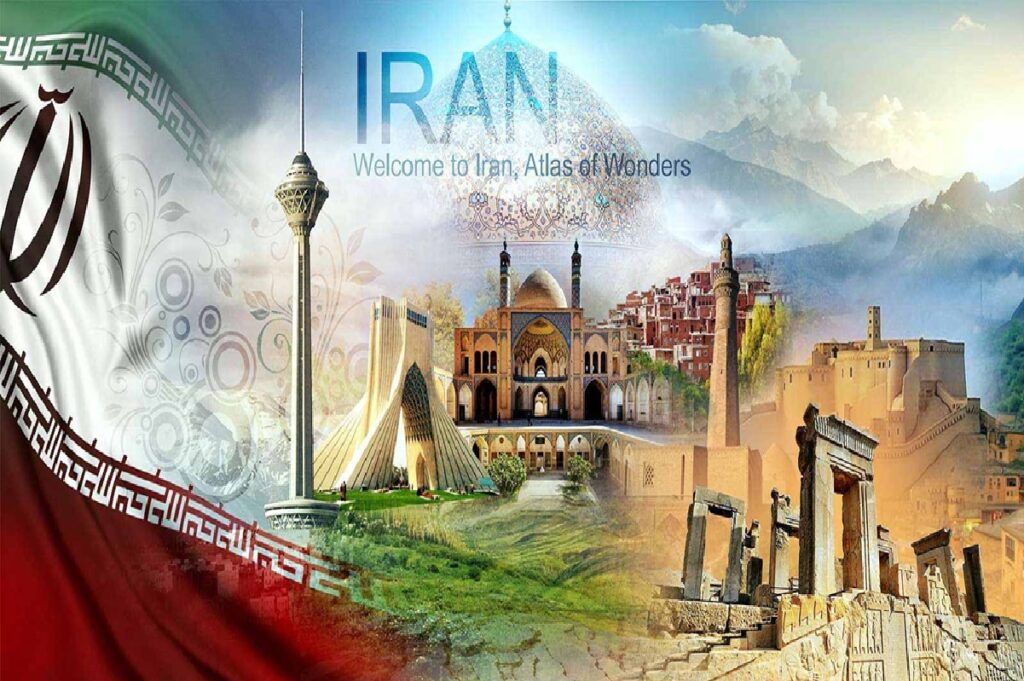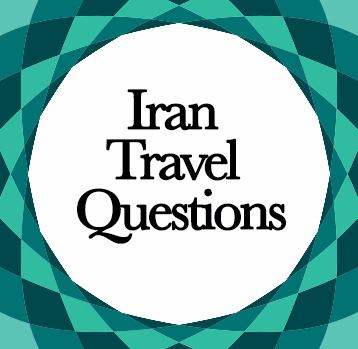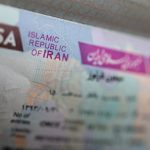Nestled in northwest Iran, Tabriz is a captivating city of history, culture, and natural beauty. As one of the most important cities in the Iranian Azerbaijan region, it offers a unique blend of Persian and Azerbaijani influences.
This Tabriz Travel Guide will help you uncover the city’s top attractions, provide insights into its rich history, and give you essential tips for planning your trip. Whether you’re a first-time visitor or a seasoned traveler, this guide will be your ultimate resource for exploring Tabriz like a local.
General Information About Tabriz
Located in northwestern Iran, Tabriz is a historic city with a rich cultural heritage and modern vibrancy. Known for its ancient Silk Road connections and stunning Persian architecture, Tabriz offers a unique travel experience. The city is renowned for its mild summers and snowy winters, making it ideal for year-round visits.
- Historical Significance: Tabriz has been a cultural center for centuries. Once, it served as the capital of Persia and a hub for artisans, poets, and traders. Today, it is a renowned craftsmanship center, particularly famous for Persian carpets and intricate tile work.
- Local Language and Culture: The primary language is Azerbaijani Turkish, and Persian is also widely spoken. Visitors will find a warm hospitality culture that reflects the people’s pride in their heritage.
- Getting Around: Tabriz has a developed public transport system, including buses, taxis, and ride-sharing options, making it easy to explore its many attractions.
Tabriz is a city where past and present converge, allowing travelers to experience ancient Persia alongside modern Iranian culture.
| Category | Details |
| Location | Northwestern Iran |
| Climate | Mild summers, snowy winters |
| Historical Significance | Former Persian capital; historical center on the Silk Road |
| Language | Primarily Azerbaijani Turkish, with Persian widely spoken |
| Famous For | Persian carpets, Blue Mosque, historic bazaars, and Kandovan cave dwellings |
| Transportation | Well-developed public transport system: buses, taxis, and ride-sharing |
| Culture | Friendly locals with strong traditions of hospitality and craftsmanship |
How to Get to Tabriz
Tabriz is one of the major cities in Iran, with a rich cultural history and easy access for travelers. Here’s a detailed investigation of how to get to Tabriz:
1. By Air
Tabriz has an international airport, Tabriz International Airport (TBZ), located about 8 km southeast of the city center. The airport serves domestic and international flights, connecting to major cities like Tehran, Istanbul, and Dubai.
- Flight Options: From Europe, you can find connecting flights via Istanbul or Dubai. From within Iran, flights from Tehran to Tabriz are frequent, with multiple options available daily.
- Airport to City Center: After arriving at TBZ, taxis are available to take you to the city center. The ride takes about 20-30 minutes. Alternatively, there are private shuttle services that you can book in advance for a more comfortable experience.
2. By Train
Tabriz is well-connected by rail, with a train station in the city center. Trains from Tehran, Isfahan, and other significant cities regularly depart for Tabriz, providing a scenic, affordable way to reach the city.
- Train Services: The trains are modern and comfortable, with options ranging from economy to VIP classes. Booking your tickets in advance is a good idea to secure your preferred class of service.
- Travel Time: The journey from Tehran to Tabriz by train takes about 10-12 hours, making it an ideal overnight travel option for those looking to save time and enjoy a scenic route.
3. By Bus
For a more budget-friendly travel option, you can take a bus from almost any major city in Iran to Tabriz. The Tabriz Bus Terminal is located on the city’s outskirts, and buses run frequently to and from various destinations.
- Travel Time: Bus travel times vary depending on your starting point, but the trip from Tehran to Tabriz by bus takes approximately 9-11 hours.
- Bus Options: Several bus companies offer different service levels, from basic to more luxurious options. Make sure to book your tickets ahead of time during peak travel seasons.
4. By Car
If you prefer more flexibility, renting a car is a great way to explore Iran at your own pace. Tabriz is accessible via the country’s major highways, including the Tehran-Tabriz road.
- Driving Distance: The drive from Tehran to Tabriz takes around 8-10 hours, depending on traffic. If renting a car in Iran, ensure you have a valid international driving permit.
- Road Conditions: The roads are generally in good condition, but always check for updates on road closures or construction before you travel.
If you prefer independence and flexibility, rent a car in Iran and explore Tabriz and its surroundings freely.
Things to Know Before Visiting Tabriz
Visiting Tabriz, one of Iran’s most culturally rich cities, requires preparation to maximize your trip. Here are essential things to know before you visit:
1. Visa and Entry Requirements
Before traveling to Tabriz, check your country’s visa requirements. Most travelers will need a tourist visa to visit Iran, which can be obtained through Iranian embassies or online via an e-visa application.
- E-Visa: Many nationalities are eligible for an e-visa, simplifying the process. Approval typically takes 7-10 days.
- Embassy Visa: Some travelers may need to apply for a visa at their nearest Iranian embassy. Ensure all the required documentation, including passport photos, proof of accommodation, and travel plans.
Some Iran Tour Packages take travelers to Tabriz to experience its UNESCO-listed Grand Bazaar and traditional carpet weaving centers.
2. Local Currency
The local currency in Tabriz is the Iranian Rial (IRR). Carrying local currency is essential as many small businesses and markets do not accept credit or debit cards.
- Currency Exchange: Exchange rates can vary, so comparing rates at different exchange offices is wise. Many travelers opt to exchange a small amount of currency at the airport upon arrival and then use local exchange shops in Tabriz.
- ATMs: International credit and debit cards may not work in Iran due to sanctions, so it’s best to carry cash or rely on local bank ATMs for withdrawals.
also read : all thing you need to know about Iran currency money
3. Language
Persian (Farsi) is the official language of Iran, and it includes Tabriz. While many people in the city understand basic English, especially in tourist areas, knowing a few key phrases in Persian can enhance your travel experience.
- Common Phrases: Learning simple greetings like “Salam” (Hello) and “Merci” (Thank you) can help you connect with locals.
- Translation Apps: If you’re struggling with the language, apps like Google Translate can help you translate in real-time.
4. Weather and Packing Tips
Tabriz weather experiences a continental climate with hot summers and cold winters. Understanding the weather will help you pack accordingly.
- Summer: Summer can be hot, reaching 35°C (95°F) during the day. Light clothing, sunscreen, and sunglasses are essential.
- Winter: Winters are cold, often dipping below freezing, and snow is possible. Bring layers, warm clothing, gloves, and a winter jacket if you’re visiting between November and February.
- Spring and Fall: These are the best seasons to visit, with mild temperatures and pleasant weather.
5. Cultural Norms and Etiquette
Iran has a rich cultural heritage, and respecting local customs will enhance your travel experience.
- Dress Code: Women must wear a headscarf in public, and it’s advisable to wear modest clothing. Men should avoid wearing shorts or sleeveless tops in public spaces.
- Social Etiquette: Iranians are known for their hospitality. It’s common for people to invite guests into their homes for tea or a meal, and it’s polite to accept such invitations.
- Bargaining: In markets, particularly the famous Tabriz Bazaar, bargaining is expected. Always negotiate respectfully, as this is part of the local shopping culture.
6. Safety
Tabriz is considered a safe city for travelers. However, staying vigilant and following common safety practices is always important.
- Personal Belongings: Be aware of your belongings, especially in crowded areas like bazaars and public transport.
- Emergency Numbers: The emergency number in Iran is 110 for police and 115 for medical emergencies.
also read : Is it safe to travel to Iran?
Top Places to Visit in Tabriz (20 Tabriz Attractions)
Tabriz, with its rich history and vibrant culture, offers a variety of attractions that every visitor must explore. From ancient mosques to bustling bazaars,
here’s a deeper look into 20 Tabriz tourist attractions:
1. Tabriz Historic Bazaar Complex
A UNESCO World Heritage site, the Tabriz Bazaar is one of the largest covered bazaars in the world. It has been a hub of commerce and trade for centuries, serving as the heart of the city’s economy. The bazaar is a labyrinth of alleys, traditional shops, and tea houses, making it a perfect spot for exploration.
- What to See: Visit the Blue Mosque, a stunning piece of Safavid architecture located within the bazaar complex. The Qaysariyyeh bazaar is also a highlight, offering a collection of handcrafted goods, carpets, spices, and more.
- Shopping Tips: Explore souvenir shops for unique handicrafts, such as Persian carpets, traditional pottery, and local jewelry. They’re also a great place to try traditional Tabrizi sweets.
2. Tabriz Museum of Contemporary Art
Tabriz has a vibrant contemporary art scene, and the Tabriz Museum of Contemporary Art showcases the works of local and international artists. It’s an ideal spot for art lovers to get an insight into Iran’s modern creative movements.
- Exhibitions: The museum features various art forms, including painting, sculpture, photography, and video art. It’s a great place to discover new artistic expressions in the context of Persian culture.
- Architecture: The building is modern, designed with large glass windows and sleek lines, contrasting with the city’s traditional buildings.
3. The Blue Mosque (Masjid-e Kabud)
The Blue Mosque is one of Tabriz’s most iconic landmarks. Originally built in the 15th century, it was known for its stunning blue tiles and intricate calligraphy. Although an earthquake partially destroyed the mosque, it remains a beautiful testament to Islamic architecture.
- Historical Significance: The mosque was once a grand piece of Safavid architecture. Its ruins are still impressive, with remnants of its original tiles and intricate stonework.
- Restoration: Restoration projects have been underway to preserve what remains of the mosque, and visiting it offers a glimpse into Iran’s rich architectural heritage.
4. El Goli Park (Shah Goli)
El Goli Park is a large recreational area in the southern part of Tabriz. It is centered around a beautiful man-made lake and includes walking paths, gardens, and a palace.
- Activities: You can rent paddle boats on the lake, walk around the park’s well-maintained paths, or enjoy a meal at one of the restaurants overlooking the water.
- Cultural Significance: The park symbolizes Tabriz’s modern side and provides a peaceful escape from the city’s hustle and bustle.
5. Arg-e Tabriz (Tabriz Citadel)
This historic citadel dates back to the 14th century and was a religious and military stronghold. Its massive brick structure stands as a testament to Tabriz’s medieval architecture.
- Key Features: The towering walls and intricate brickwork are highlights. The site is wonderful when illuminated at night.
6. Poets’ Mausoleum (Maqbarat-o-Shoara)
Known as the resting place of over 400 Persian poets and thinkers, this mausoleum is a tribute to Iran’s literary heritage.
- Why Visit: The modern structure and serene atmosphere make it a unique spot for reflection on Persian literature and culture.
7. Saint Mary’s Armenian Church
Saint Mary A historical Armenian church located in the city center, it reflects the religious diversity of Tabriz.
- Architecture: The church boasts beautiful stone carvings and traditional Armenian design.
- Cultural Significance: It serves as a reminder of the city’s multicultural past.
8. Kaboodan Island (Orumiyeh Lake)
The lake was once a vibrant ecosystem near Tabriz and is still famous for nature enthusiasts.
- Activities: Birdwatching, exploring salt formations, and enjoying the surreal landscapes.
9. Qajar Museum (Amir Nezam House)
This historic house-turned-museum showcases artifacts from the Qajar era.
- Exhibits: Antique furniture, traditional costumes, and stunning tilework.
- Architecture: The house is a masterpiece, with a courtyard and elaborate ceiling designs.
10. Eynali Mountain
Eynali Mountain is a popular spot for hiking and picnicking, offering panoramic views of Tabriz.
- Activities: Hiking trails, a cable car ride, and the historic shrine of Imamzadeh.
- Tip: Visit during sunrise or sunset for breathtaking vistas.
11. Behnam House
A well-preserved example of 19th-century Qajar architecture, this house is part of the University of Art in Tabriz.
- Why Visit: The colorful stained-glass windows and intricate stucco designs are must-sees.
12. Parvin Etesami House
The former home of Parvin Etesami, one of Iran’s most celebrated female poets.
- Highlights: Visitors can explore the poet’s artifacts and learn about her life.
13. Iron Age Museum
Located near the Blue Mosque, this museum showcases artifacts from the Iron Age that were unearthed during archaeological excavations in Tabriz.
- Exhibits: Ancient tools, pottery, and burial sites.
14. Laleh Park
A modern shopping and recreational center, it blends urban life with nature.
- Attractions: High-end shops, cafes, and beautifully landscaped gardens.
- Why Visit: It’s an excellent place for both shopping and relaxation.
15. Kandovan Village
A short drive from Tabriz, Kandovan is a unique village where homes are carved directly into volcanic rock.
- What Makes It Special: Often compared to Turkey’s Cappadocia, this village is a living museum of ancient architecture.
- Activities: Exploring the rock dwellings, tasting local honey, and enjoying the tranquil environment.
16. Mashrouteh House (Constitution House)
This historic building played a significant role during the Persian Constitutional Revolution.
- Highlights: The stained-glass windows and artifacts related to Iran’s political history.
- Why Visit: A must-see for history enthusiasts.
17. Shahriar Museum
Dedicated to the famous Iranian poet Mohammad-Hossein Shahriar, this museum is housed in his former home.
- Attractions: Personal belongings, manuscripts, and photographs of Shahriar.
18. Saat Tower (Tabriz Municipality Palace)
This iconic clock tower symbolizes Tabriz and is a remarkable example of early 20th-century architecture in Iran.
- What to See: The tower features a small museum with historical photographs and artifacts.
- Why Visit: The square around the tower is a great spot to soak in the city’s vibe and photograph.
19. Mehr Garden (Bagh-e Mehr)
Mehr Garden is a tranquil garden with beautiful landscaping, perfect for a peaceful afternoon.
- Highlights: Manicured paths, fountains, and a serene atmosphere ideal for relaxing.
- Best Time to Visit: Spring, when the garden’s flowers bloom.
20. Tabriz Jameh Mosque
A historic mosque dating back to the Seljuk era showcasing stunning Islamic architecture.
- Features: Intricate brickwork, ornate domes, and beautiful inscriptions.
- Why Visit: It’s one of the oldest religious structures in the city and provides a deep insight into Islamic art and architecture.
also read : Top tourist attractions in Iran
Things to Do in Tabriz
Tabriz Tourism offers an array of unique experiences for travelers eager to explore the city’s rich culture, history, and natural beauty. Here’s a look at some of the best activities to enjoy in Tabriz:
1. Explore the Tabriz Historic Bazaar
As one of the world’s oldest and largest covered bazaars, the Tabriz Bazaar is a must-see. It’s a bustling center of commerce where you can shop for traditional Persian carpets, spices, and handicrafts. You can easily spend a few hours here getting lost in the labyrinth of alleys and discovering the vibrant atmosphere.
- Bargaining: When shopping, don’t hesitate to haggle. It’s an expected practice in Iranian markets, and you’ll likely get better deals.
- Local Food: Visit the various food stalls to try kebabs, faloodeh, and other delicious Iranian snacks.
2. Visit El Goli Park
El Goli Park is a fantastic escape from the busy city streets. This vast green space features a large artificial lake where visitors can rent paddle boats, enjoy picnics, or just walk around the park. There’s also a palace in the middle of the lake, which can be visited for a more scenic view.
- Perfect for a Relaxing Day: It’s an ideal spot for families and anyone who wants to unwind in nature.
- Activities: Paddle boating, walking, or just enjoying a meal at one of the lakeside restaurants are great ways to enjoy the park.
3. Take a Stroll Around the Tabriz Historic Gardens
Tabriz is home to several stunning gardens that reflect the city’s Persian heritage. These gardens offer peaceful retreats with beautiful landscaping, fountains, and walking paths. The Shahriar Garden and the Bagh-e-Melli are perfect spots for a quiet afternoon stroll.
- Cultural Heritage: Many of these gardens have been around for centuries and reflect the ancient Persian style of garden design, combining natural beauty with architectural elegance.
4. Visit the Azerbaijan Museum
Tabriz’s Azerbaijan Museum is a must-visit for anyone interested in learning about the region’s rich cultural and historical heritage. The museum is home to many artifacts, including pottery, ancient scripts, and archaeological finds from the area.
- Educational Experience: Spend a few hours in the museum to better understand the history of Tabriz and Azerbaijan.
- Ancient Artifacts: The museum’s collection spans centuries, from ancient civilizations to modern Iran, making it a rich educational experience.
5. Enjoy Persian Cuisine
No trip to Tabriz would be complete without indulging in the local cuisine. Tabriz is famous for its delicious and diverse food offerings, from kebab to khoresh (Persian stews). Don’t miss trying the following dishes:
- Kebab: Grilled meat skewers, usually served with rice, grilled tomatoes, and flatbread.
- Tabrizi Kuku: A type of herb-filled omelette.
- Faloodeh: A refreshing dessert made with thin vermicelli noodles, rosewater, and sugar syrup, often served with ice.
6. Attend a Traditional Iranian Tea Ceremony
Tea is a big part of Iranian culture, and it is no different in Tabriz. Visit one of the local chai khanehs (tea houses) to experience the traditional Iranian tea ceremony. These cozy spots are also great places to relax, sip tea, and enjoy sweets and small bites.
- Cultural Experience: The Iranian tea ceremony is an important part of local culture, with tea being served in special glasses called gavz.
7. Take a Day Trip to Kandovan Village
Located about 60 kilometers from Tabriz, the village of Kandovan is famous for its troglodyte homes carved into the mountain’s volcanic rocks. Visiting this unique village offers a glimpse into the past, where people have lived in these cave homes for centuries.
- What to See: The homes, shaped like beehives, are still inhabited today, and there’s a rich history to explore. You can also enjoy traditional handicrafts made by the locals.
- Hiking: The surrounding mountain area offers excellent hiking trails with breathtaking views.
also read : When is the Best Time to Visit Iran?
Best Time to Visit Tabriz
The best time to visit Tabriz depends on your preferences for weather and activities.
Spring (March to May) offers mild weather (15–25°C), blooming nature, and cultural festivals like Nowruz.
Summer (June to August) can be hot (up to 35°C), but evenings are cooler for exploring parks and tea houses.
Autumn (September to November) brings pleasant temperatures (20–30°C) and stunning foliage, ideal for hiking.
Winter (December to February) is cold, often snowy, and great for winter sports and a cozy ambiance.
Seasonal Overview Table Of Tabriz Weather
| Season | Temperature | Highlights | Tips |
| Spring | 15–25°C (59–77°F) | Blooming nature, outdoor sightseeing, Nowruz festival | Ideal for cultural and outdoor activities |
| Summer | Up to 35°C (95°F) | Cool evenings, museums, indoor attractions | Stay hydrated, explore in the evenings |
| Autumn | 20–30°C (68–86°F) | Beautiful foliage, hiking opportunities | Perfect for outdoor exploration |
| Winter | Below 0°C (32°F) | Snowy mountains, skiing, cozy tea houses | Dress warmly, enjoy winter sports |
What to Eat in Tabriz
Food is an essential part of the cultural experience when visiting Tabriz. Known for its unique blend of flavors, the city offers dishes that reflect its rich history and regional influences. Tabriz’s cuisine will satisfy all tastes, from traditional Persian meals to local specialties.
1. Kebab: The Ultimate Persian Dish
No visit to Tabriz is complete without sampling kebab, a beloved Iranian dish. Typically made from lamb, beef, or chicken, kebabs are marinated in aromatic spices and then grilled to perfection.
2. Faloodeh: A Persian Dessert Delight
If you have a sweet tooth, then faloodeh is a must-try dessert. This refreshing treat is often served with ice and thin vermicelli noodles, rosewater, and sugar syrup. The chilled dessert is perfect for the warm days of summer in Tabriz.
3. Kufteh Tabrizi (Tabriz Meatballs)
A signature dish of Tabriz, these oversized meatballs are made with minced meat, rice, split peas, and herbs, often stuffed with nuts, dried fruits, or boiled eggs.
4. Khoresh: A Persian Stew
Iranian stews, known as khoresh, are another culinary delight in Tabriz. These stews are rich, flavorful, and made with meat, vegetables, and spices. Common types include Khoresh Gheymé (a beef and yellow split pea stew) and Khoresh Fesenjan (a stew made with chicken, pomegranate, and walnuts).
5. Lavash: The Persian Bread
Lavash is the traditional Persian flatbread served with almost every meal in Tabriz. It’s soft and thin, perfect for scooping up dips, wraps, or kebabs.
6. Saffron Ice Cream: A Royal Treat
Saffron is an integral part of Persian cooking, and it’s used in various sweet treats. One of the most famous desserts in Tabriz is saffron ice cream, a creamy, flavorful treat infused with the delicate flavor of saffron.
7. Tandoori Bread and Local Dips
Tandoori bread is a traditional Iranian bread baked in a clay oven. It’s commonly served with local dips, such as mast-o-Khair (a yogurt and cucumber dip) or bademjan (eggplant dip). These light and flavorful dips make perfect accompaniments to your meal.
8. Ash Reshteh: A Hearty Soup
Ash Reshteh is a thick, hearty soup made from herbs, beans, and noodles. This nutritious and filling dish is often enjoyed as a meal, especially during colder months. It’s rich in flavors and provides a comforting experience.
9. Local Sweets: Baklava and Saffron Pastries
Persian sweets are renowned for their richness and complexity. In Tabriz, you can indulge in baklava, a sweet pastry made from layers of filo dough, filled with nuts, and soaked in syrup. Another popular treat is saffron-infused pastries, often served with tea in the afternoon.
also read : How Much Does Iran Travel Cost?
Accommodation in Tabriz
A comfortable place to stay in Tabriz is essential for a pleasant trip. The city offers various accommodation options, from budget hostels to luxury hotels catering to all travelers.
1. Luxury Hotels in Tabriz
For those looking to enjoy a luxurious stay, Tabriz offers a selection of high-end hotels with modern amenities. These hotels often feature spacious rooms, stunning views, and top-notch services.
- Pars Hotel: A five-star hotel in the heart of Tabriz, offering luxury accommodations, an indoor pool, and excellent dining options. Visit Pars Hotel On Google Maps
- Tabriz International Hotel: Another high-end option with well-appointed rooms, fitness facilities, and various dining options. Visit Tabriz International Hotel On Google Maps
2. Mid-Range Hotels
Several mid-range hotels in Tabriz offer excellent services at reasonable prices for travelers who prefer a balance between comfort and price.
- Behboud Hotel: This is a great mid-range hotel close to key attractions like the Tabriz Bazaar. It offers both local and international cuisine. Visit Behboud International Hotel On
- Gostaresh Hotel: Known for its modern rooms and professional service, Gostaresh Hotel is another excellent choice for those who want comfort without the luxury price tag. Visit Gostaresh International Hotel On
3. Budget Accommodations
If you’re traveling on a budget, there are several affordable hostels and guesthouses in Tabriz. These options provide a more basic level of comfort but are perfect for those who don’t mind more straightforward accommodations.
- Bahar Hostel: A well-rated, budget-friendly hostel with clean rooms and friendly staff. Visit Bahar Hostle On Google Maps
4. Traditional Persian Guesthouses
For a truly authentic experience, stay in a traditional Persian guesthouse. These guesthouses offer an intimate and cultural atmosphere, often decorated with Persian carpets and other traditional items.
- Kandovan Cave Hotel: For a unique experience, stay in the troglodyte homes of Kandovan, where you’ll be staying in caves carved into the mountain. It’s an excellent option for travelers looking for something unusual. Visit Laleh Kandovan Hotel On Google Maps
What to Buy in Tabriz?
Shopping in Tabriz offers an opportunity to take home some unique items that reflect the city’s rich culture and craftsmanship. The city has a long-standing history of producing high-quality goods, and its bustling bazaars are filled with colorful products that make great souvenirs.
1. Tabriz Carpets
Tabriz is famous for its Persian carpets, intricate designs, and vibrant colors. These handmade carpets are highly prized worldwide for their craftsmanship. You’ll find them in various sizes, from small prayer to large area rugs.
- Where to Buy: Visit the Tabriz Bazaar, where numerous shops sell these beautiful pieces. The carpets are usually woven from fine wool or silk, making them durable and luxurious.
2. Tabrizi Handicrafts
Traditional Persian handicrafts are also great souvenirs to bring home. In the markets around Tabriz, you can find handmade items like miniature paintings, copperware, and pottery. Each of these items carries the artistry of skilled local craftsmen.
- Where to Buy: Many handicraft shops in Tabriz Bazaar and near Shahriyar Square specialize in these items. Take your time to explore and find one-of-a-kind pieces.
3. Spices and Saffron
Iran is known for producing some of the best saffron in the world, and Tabriz is no exception. The markets in Tabriz are filled with jars of aromatic spices and rich, high-quality saffron that you can purchase to take home. These spices are used in many traditional Persian dishes, making them perfect for food enthusiasts.
- Where to Buy: You can purchase saffron and spices at Tabriz Bazaar. Many spice shops sell saffron in small, well-sealed packages to ensure freshness.
4. Local Sweets and Treats
Tabriz offers a variety of local sweets, such as baklava, saffron ice cream, and faloodeh that are perfect for gifts or personal treats. These items are packed with the flavors of Persian cuisine, making them ideal ways to bring a taste of Tabriz home.
- Where to Buy: Local sweet shops near El Goli Park and around Tabriz’s bazaar sell these delicious treats. You can also find sweets at traditional cafes.
5. Tabriz Rugs and Tapestries
Apart from carpets, Tabriz is known for its exemplary tapestries and embroidered fabrics. These items are often intricately handwoven and can be used for wall hangings, cushions, or table covers.
- Where to Buy: Tabriz Bazaar is your best bet for finding high-quality woven fabrics and tapestries. The craftsmanship here is often passed down through generations, so you’ll surely get something unique.
also read : what to pack for Iran
Conclusion To Tabriz Travel Guide
Tabriz Tourism offers a rich tapestry of experiences, from exploring historical landmarks to embracing vibrant culture. Key Tabriz attractions include the UNESCO-listed Tabriz Grand Bazaar, Kandovan’s unique cave dwellings, and the picturesque El Goli Park. The city’s blend of ancient heritage and stunning landscapes, complemented by warm hospitality and delicious local cuisine, ensures a memorable trip. Whether you’re a history buff, nature lover, or cultural explorer, Tabriz is a must-visit destination for travelers seeking an unforgettable adventure in Iran.
FAQs To Tabriz Travel Guide
What is Tabriz famous for?
Tabriz is renowned for its rich history, UNESCO-listed Historic Bazaar, Persian carpets, artistic heritage, and the scenic Kandovan rocky village nearby.
How many days do you need in Tabriz?
You’ll need 3-4 days to explore major attractions like the bazaar, El Goli Park, and nearby Kandovan village while enjoying local culture and cuisine.
Is Tabriz an expensive city?
Tabriz is affordable compared to global standards. Budget travelers can enjoy local food, attractions, and accommodations without overspending.
What are some unique attractions in Tabriz?
Explore Kandovan’s rock-carved homes, the historic Blue Mosque, and the artistic treasures at Tabriz Museum of Contemporary Art for unforgettable experiences.
Are people from Tabriz Turkish?
Tabrizis primarily speak Azerbaijani Turkish, a Turkic language, but are Iranian citizens with strong ties to Azeri culture and traditions.


